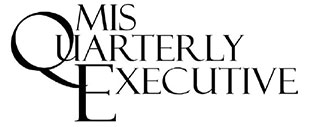Home > Journals > AIS Journals > MISQE > Vol. 5 (2006) > Iss. 4

Abstract
This article explores the relationship between IT outsourcing and enterprise architecture. An earlier article described four stages of architecture maturity (business silos, standardized technology, rationalized process, and business modularity). In this article, we conclude that three different outsourcing arrangements support transitions from one stage to another, as follows: 1. Firms transitioning from Stage 1 (business silos) to Stage 2 (standardized technology) can use a strategic partnership form of outsourcing to support the transition. The vendor can take the lead in defining, implementing, operating, and updating a standardized technology environment so that the client need not invest in developing these world-class skills. We describe how a partnership between Campbell Soup and IBM helped Campbell transition to Stage 2. 2. Companies transitioning from a Stage 2 enterprise architecture (standardized technology) to Stage 3 (rationalized process) can benefit from a co-sourcing alliance form of outsourcing in making this transition. The vendor, who is in a close working relationship with the client, can help implement the technology changes to support the new business processes while the client can focus on the change management aspects of the transition. An alliance between The Dow Chemical Company and Accenture serves as an example. 3. Companies transitioning from a Stage 3 enterprise architecture (rationalized process) to Stage 4 (business modularity) can benefit from the transaction exchange form of outsourcing. Our example is eFunds, a transaction exchange vendor, that helps its clients implement, process by process, their vision to become sleek, high-performing firms that use plug-and-play, industry-standard components.
Recommended Citation
Ross, Jeanne W. and Beath, Cynthia M.
(2008)
"Sustainable IT Outsourcing Success: Let Enterprise Architecture Be Your Guide,"
MIS Quarterly Executive: Vol. 5:
Iss.
4, Article 7.
Available at:
https://aisel.aisnet.org/misqe/vol5/iss4/7

